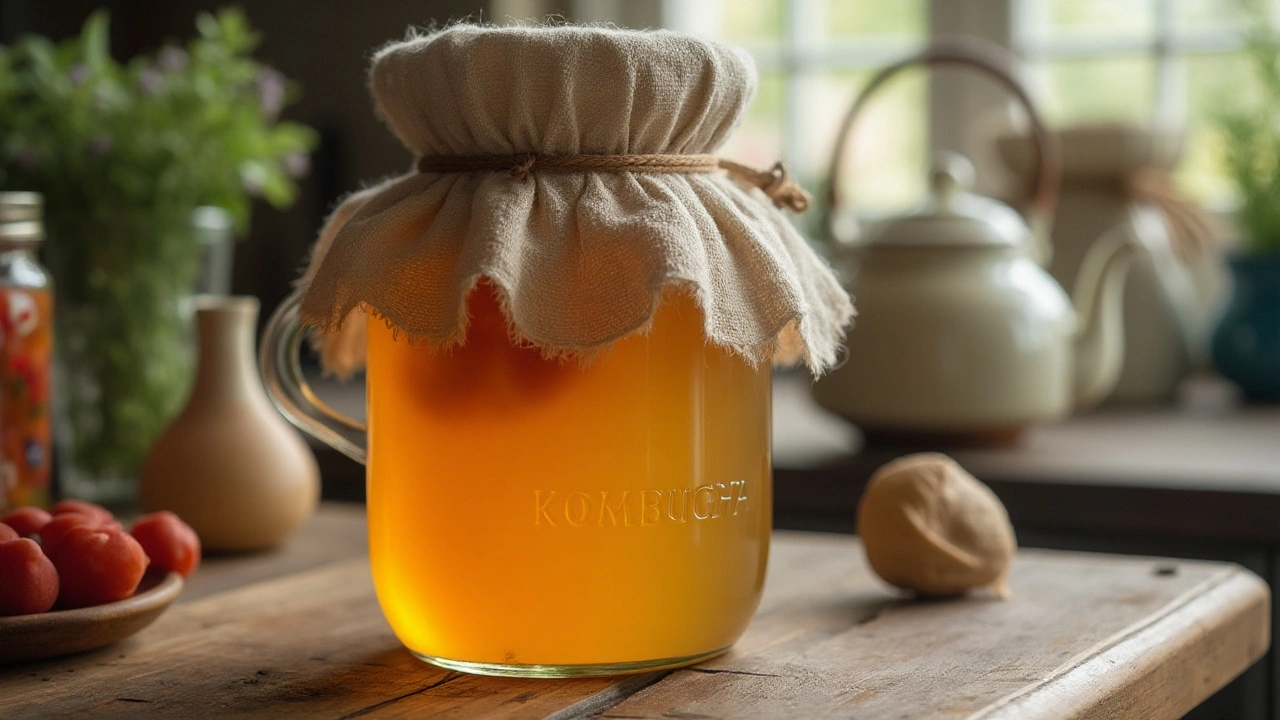Kombucha Tea – What It Is and Why You’ll Love It
Ever wonder why kombucha shows up on everybody’s Instagram feed? It’s a fizzy, slightly tangy drink made from sweet tea that’s been fermented with a symbiotic culture of bacteria and yeast (SCOBY). The result is a probiotic‑rich beverage that can boost digestion, give you a gentle energy lift, and add a fun sparkle to your day.
Quick Health Wins From Kombucha
The biggest draw for most people is the gut‑friendly probiotics. Those live microbes help balance your intestinal flora, which can translate into smoother digestion and fewer bloating episodes. Some studies also link regular kombucha consumption with improved immune response because a healthy gut is the backbone of immunity.
Besides gut health, kombucha contains antioxidants from the tea base. Antioxidants fight free radicals, so you get an extra layer of protection against oxidative stress. The drink’s low sugar content (once it ferments) means you won’t spike your blood sugar like a soda would.
How to Brew Kombucha at Home – No PhD Required
If buying bottled kombucha feels pricey, try brewing yourself. You only need four things: black or green tea, plain white sugar, starter liquid (unflavored kombucha from a store‑bought bottle), and a SCOBY. Here’s the simplest step‑by‑step:
- Boil 1 quart of water, add 1 cup of sugar, stir until dissolved.
- Add 4–5 tea bags (or loose leaf equivalent). Let steep for about 10 minutes.
- Remove the tea, let the liquid cool to room temperature.
- Pour the sweet tea into a glass jar, add the starter liquid (about ½ cup) and gently place the SCOBY on top.
- Cover the jar with a breathable cloth, secure with a rubber band, and let it ferment in a dark spot for 7‑14 days. Taste daily – when it’s tangy enough for you, it’s ready.
After the first batch, you can reuse the SCOBY for endless rounds. Just keep feeding it fresh tea and sugar, and you’ll have a steady supply of kombucha without extra cost.
Buying Kombucha Online – Stay Safe, Save Money
If home brewing isn’t your thing, buying bottled kombucha is still easy. Look for brands that list the SCOBY culture on the label and provide a clear expiration date. Authentic kombucha should be slightly cloudy and may have sediment at the bottom – that’s normal.
Beware of deals that sound too good to be true. Ultra‑cheap bottles often come from unregulated sources, which can lead to contamination or diluted probiotic content. Stick to reputable online pharmacies, health food stores, or directly from brand websites that offer third‑party lab testing results.
When you order, check the shipping method. Kombucha should arrive in a cool environment; many sellers use insulated packaging during hot months. Once it’s home, store the bottles in the refrigerator to keep the flavor crisp and prevent over‑fermentation.
Tips for Enjoying Your Kombucha
Serve it chilled, straight from the fridge, or pour a splash into your favorite mocktail for extra fizz. If you find the tang too strong, mix half kombucha with sparkling water or a dash of fruit juice.
Remember, moderation is key – 8‑12 oz per day is enough to reap benefits without overloading your gut with acidity. And if you have a sensitive stomach, start with a smaller amount and see how you feel.
Whether you brew it yourself or buy a trusted bottle online, kombucha tea offers an easy way to add probiotics, antioxidants, and a refreshing taste to your routine. Give it a try and notice the subtle boost in digestion and energy – you might just find a new favorite drink.

